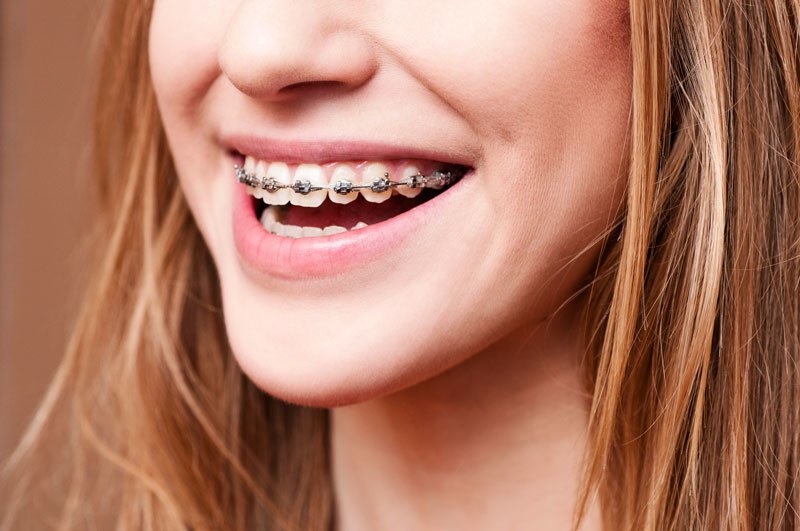Comprehensive Guide to Orthodontics Treatments for Fixing Oral Misalignments
Understanding the intricacies of each treatment, including their mechanisms, benefits, and potential disadvantages, is crucial in making notified choices concerning one's orthodontic treatment. As we navigate with the comprehensive guide to orthodontic treatments for fixing dental misalignments, the complex details of each approach will unravel, losing light on the course toward a practical and harmonious dental alignment.
Orthodontic Procedures Summary

In addition to traditional braces and clear aligners, orthodontists may also recommend other treatments like headwear, palatal expanders, or retainers to deal with particular alignment issues (cumming aligners). These procedures are customized to each client's distinct demands and may include a mix of therapies to accomplish the desired results. Normal changes and monitoring are important components of orthodontic treatment to make certain development is on track and to make any kind of necessary alterations along the way. By going through orthodontic treatments, patients can not only accomplish a straighter grin but likewise enhance their total dental health and function.
Standard Dental Braces: Just How They Function
When thinking about orthodontic treatments for dental imbalances, traditional dental braces stand out as a time-tested technique for fixing teeth positioning. Typical braces consist of braces, wires, and bands that work with each other to use continuous stress on the teeth, progressively moving them into the preferred placement.
One secret aspect of how typical braces job is the process of bone improvement. As stress is put on the teeth with the dental braces, the bone surrounding the teeth is reshaped to support the brand-new tooth settings. This improvement is important for the long-lasting security of the fixed alignment. Clients will require normal changes at the orthodontist's workplace to guarantee the dental braces proceed to use the correct pressure for effective teeth motion.
Unnoticeable Aligners: Cons and pros
Undetectable aligners use a practical and discreet option to traditional braces for dealing with oral imbalances. These clear, custom-made trays are virtually invisible when put on, making them an attractive option for individuals looking for a much more aesthetically pleasing orthodontic treatment. Among the main advantages of invisible aligners is their removability, enabling for simpler upkeep of dental hygiene compared to typical dental braces. Clients can remove the aligners prior to eating or cleaning their teeth, minimizing the danger of food getting embeded the home appliance and streamlining the cleansing process.

Surgical Orthodontic Options
Surgical treatments in orthodontics existing sensible choices for addressing complex dental imbalances that may not be successfully solved via standard orthodontic therapies. While unseen aligners and conventional dental braces can remedy lots of orthodontic problems, certain cases call for surgical treatment to attain ideal results. Surgical orthodontic options are normally suggested for serious malocclusions, substantial jaw disparities, and cases where the underlying bone structure needs adjustment to attain correct alignment.
One common surgical orthodontic treatment is orthognathic surgery, which includes rearranging the jaws to deal with practical issues such as trouble eating or speaking. This surgical treatment is typically carried out in collaboration with an orthodontist that helps straighten the teeth before and after the treatment. Surgical orthodontics may additionally include procedures to subject impacted teeth, get rid of excess gum cells, or reshape the jawbone to create an extra harmonious face profile.
Prior to considering medical orthodontic options, people undergo a thorough examination to determine the need and potential advantages of such interventions. aligners. While surgical treatment may appear difficult, it can significantly enhance both the feature and aesthetic appeals of the smile in instances where conventional orthodontic treatments fall short
Retainers and Post-Treatment Treatment

Post-treatment care includes adhering to the orthodontist's instructions faithfully. This might consist of appropriate oral health methods, going to follow-up appointments, and putting on the retainers as prescribed. Failure to follow post-treatment treatment guidelines can cause regression, where the teeth gradually relocate back in the direction of their original positions. Consistent retainer wear, great dental health, and normal oral exams are essential for maintaining the results achieved via orthodontic surgery and making sure the long-lasting security of the dealt with oral placement.
Final Thought
In conclusion, orthodontic treatments provide numerous choices for correcting dental imbalances. Surgical orthodontic choices are readily available for much more severe imbalances. Overall, orthodontic procedures can effectively enhance oral health and visual look.
As we navigate via the you can look here extensive overview to orthodontic procedures for fixing oral misalignments, the elaborate information of each method will unravel, shedding light on the path towards a practical and unified oral alignment. - orthodontist
One of the most typical orthodontic therapies is the usage of braces, which consist of steel braces and cords that apply gentle pressure to progressively change teeth into the preferred setting.When taking into consideration orthodontic therapies for oral misalignments, conventional braces stand out as a reliable approach useful content for correcting teeth positioning. Additionally, undetectable aligners might not be suitable for intricate orthodontic concerns that require even more considerable teeth activity, as they are generally suggested for moderate to moderate cases. Retainers are customized orthodontic devices developed to hold teeth in their remedied settings after the completion of orthodontic treatment.